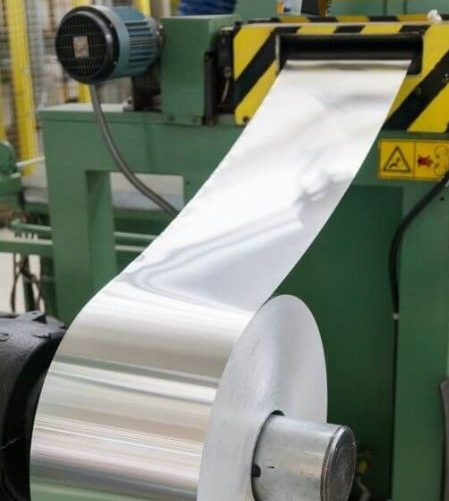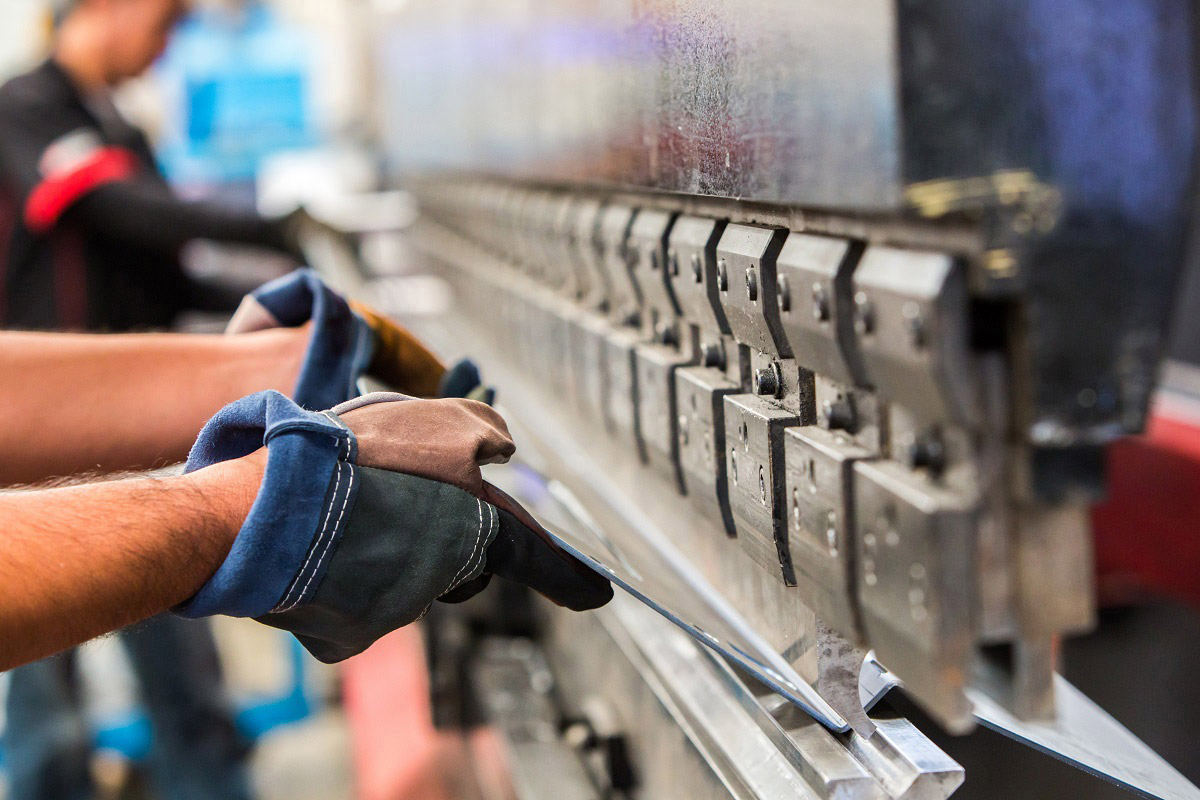Maximizing Efficiency and Quality With Cutting-Edge Steel Stamping Techniques
In the world of steel marking, the pursuit of operational excellence with the assimilation of cutting-edge techniques is paramount. The junction of advanced metal marking approaches, automated systems, rigid top quality controls, and lean manufacturing concepts uses a tantalizing peek into the future of manufacturing.
Advanced Metal Stamping Technologies
In the realm of metal stamping, the assimilation of advanced innovations has transformed the industry, boosting accuracy and performance in making procedures - Metal Stamping. Advanced steel marking innovations have played a critical function in elevating the capabilities of producers, enabling for more elaborate styles and higher manufacturing speeds
Among one of the most substantial advancements in steel marking innovation is the application of computer mathematical control (CNC) systems. CNC systems make it possible for specific control over the stamping process, causing precise and consistent manufacturing of facility components. Furthermore, making use of servo presses has caused enhancements in energy performance and lowered cycle times, additionally enhancing the manufacturing process.
In addition, the integration of automation and robotics has structured metal marking operations by raising efficiency and decreasing the risk of mistakes. Automated systems can perform jobs with speed and precision, causing enhanced total efficiency in the manufacturing line.
Automated Procedures for Efficiency
Application of automated processes in steel marking operations has actually significantly boosted performance and efficiency in producing centers (Metal Stamping). Automated systems have actually reinvented the metal marking sector by enhancing processes, lowering manual treatment, and minimizing the margin of mistake. These automated options include a series of innovations, including robotic arms, CNC machines, and digital control systems, that work cohesively to execute detailed stamping jobs with accuracy and speed
One primary benefit of automated processes in metal marking is the regular quality they provide. By removing human error and variants in production, automated systems make certain that each stamped part fulfills exact specifications with very little problems. Automation allows continual procedure, substantially minimizing downtime for device changes and maintenance, therefore making best use of overall efficiency.
In addition, automated procedures boost security in steel marking procedures by lessening the need for hands-on handling of hefty products and sharp tools. This not just safeguards employees however likewise contributes to a more efficient and structured process. To conclude, the integration of automated procedures in metal marking operations is critical for accomplishing optimal performance, high quality, and safety criteria in contemporary manufacturing environments.
Top Quality Control Procedures in Stamping
Given the focus on regular high quality and performance attained through automated procedures in steel marking procedures, carrying out durable top quality control measures becomes vital to make sure and support criteria accuracy in stamped parts. Quality control in metal marking entails a multi-faceted strategy to ensure the integrity and accuracy of the final items. By incorporating these steps into steel stamping operations, manufacturers can continually create top notch stamped components that satisfy the stringent needs of contemporary markets.
Enhancing Accuracy Via Advancement
To achieve unequaled accuracy in metal stamping procedures, introducing technologies are constantly being established and integrated into the manufacturing process. Advanced modern technologies such as laser cutting systems and computer system numerical control (CNC) makers have revolutionized the method metal elements are marked with utmost accuracy. By making use of laser reducing innovation, makers can attain complex and complicated layouts with micron-level accuracy, making sure that each stamped component fulfills the strictest high quality criteria.

Additionally, making use of simulation software application Recommended Site allows suppliers to evaluate and enhance marking procedures prior to real manufacturing, determining prospective areas for renovation and tweak criteria to attain maximum precision. By welcoming these ingenious technologies, suppliers can improve accuracy, boost efficiency, and deliver top quality stamped products that satisfy one of the most strict demands of modern-day markets.
Implementing Lean Production Practices
Integrating lean production practices into metal stamping operations can bring about structured production procedures and increased total performance. By concentrating on removing waste, maximizing resources, and continuously boosting procedures, metal marking firms can boost productivity and top quality while minimizing costs. One vital element of carrying out lean production in metal stamping is the focus on producing a smooth and efficient workflow. This involves organizing workstations, standardizing processes, and decreasing unnecessary activities to make the most of effectiveness.
Furthermore, lean production practices urge a society of continuous improvement within the organization. By encouraging workers to recognize and deal with inadequacies, firms can make incremental adjustments that cause substantial productivity gains in time. Carrying out devices such as 5S, Kanban systems, and worth stream mapping can aid improve procedures, decrease lead times, and improve general high quality in steel marking processes.
Conclusion
Finally, the use of advanced metal stamping modern technologies, automated procedures, top quality control actions, innovation for precision enhancement, and implementation of lean manufacturing methods are important for making the most of efficiency and high quality in steel stamping operations. These methods make sure that items are produced visit their website with accuracy, cost-effectiveness, and uniformity. By integrating these innovative strategies, makers can remain affordable in the industry and meet the needs of clients effectively.

Offered the emphasis on constant quality and efficiency achieved via automated processes in steel marking procedures, carrying out robust quality control steps comes to be necessary to make sure and maintain requirements accuracy in stamped components. Carrying out tools such as Five, Kanban systems, and value stream mapping can assist improve operations, decrease lead times, and enhance general quality in metal marking procedures.
In verdict, the application of sophisticated steel stamping modern technologies, automated processes, quality control measures, advancement for precision improvement, and application of lean manufacturing practices are crucial for making the most of performance and quality in metal stamping procedures.
Comments on “The Development of Metal Stamping Technology: A Comprehensive Review”